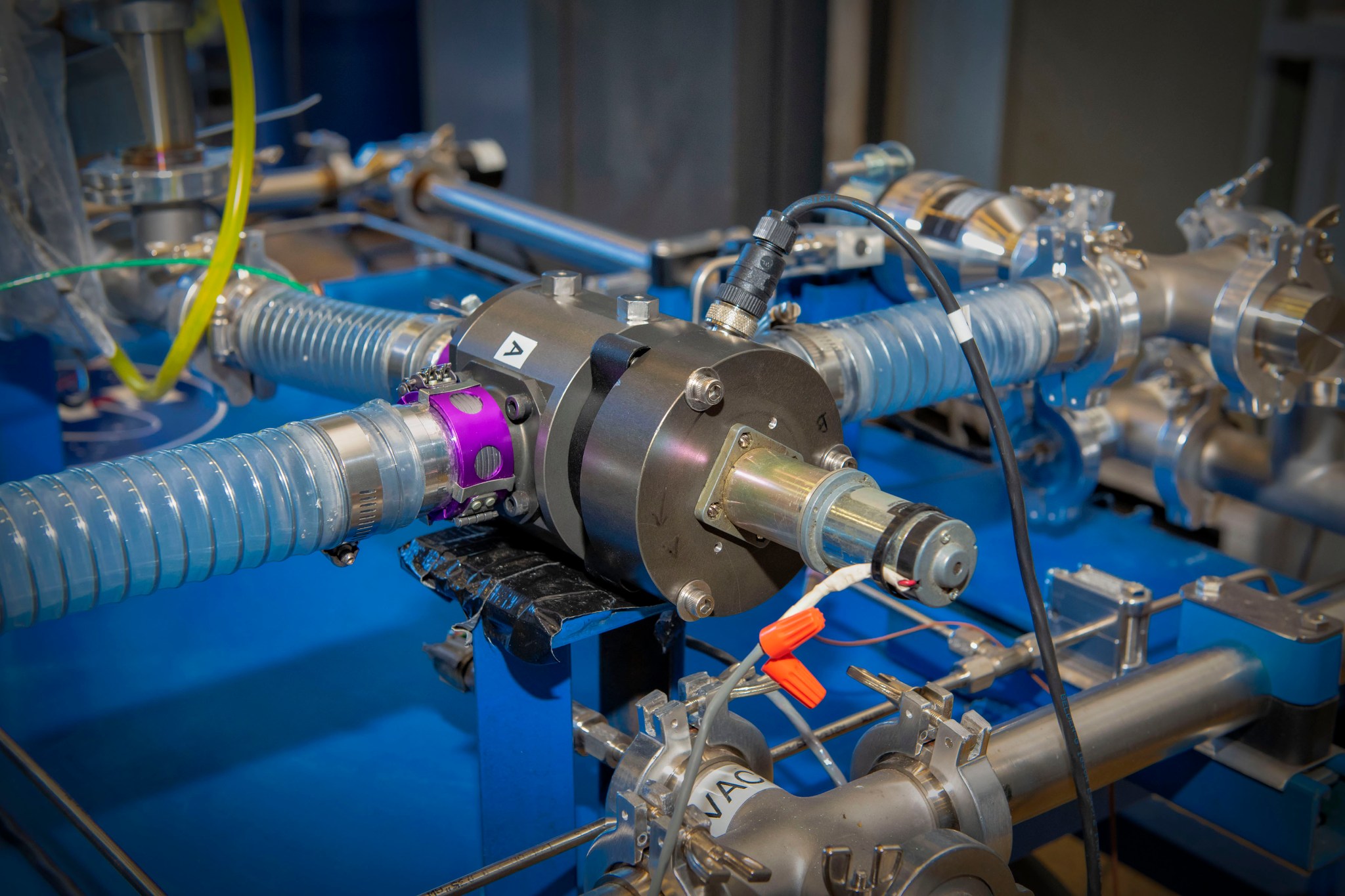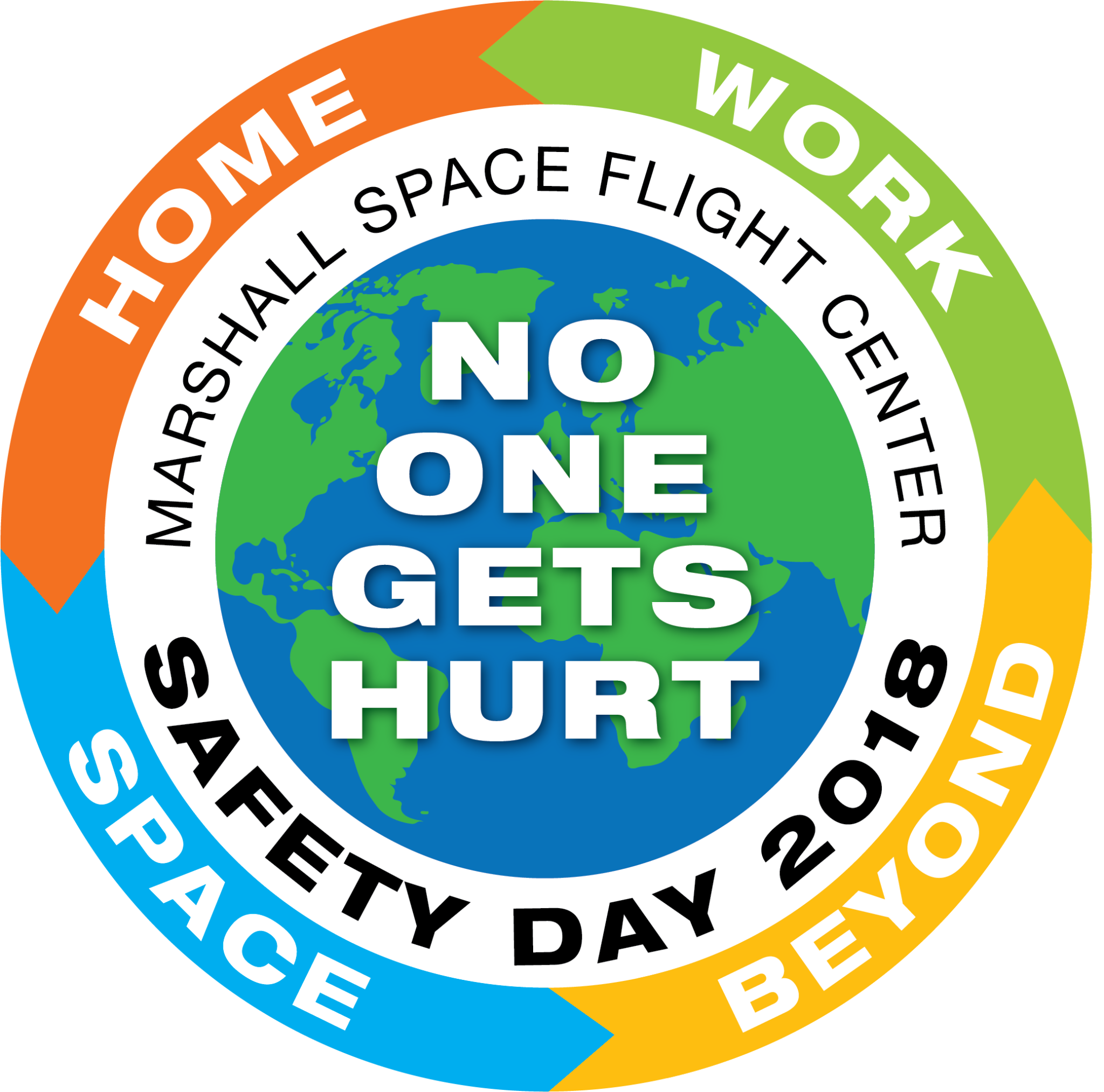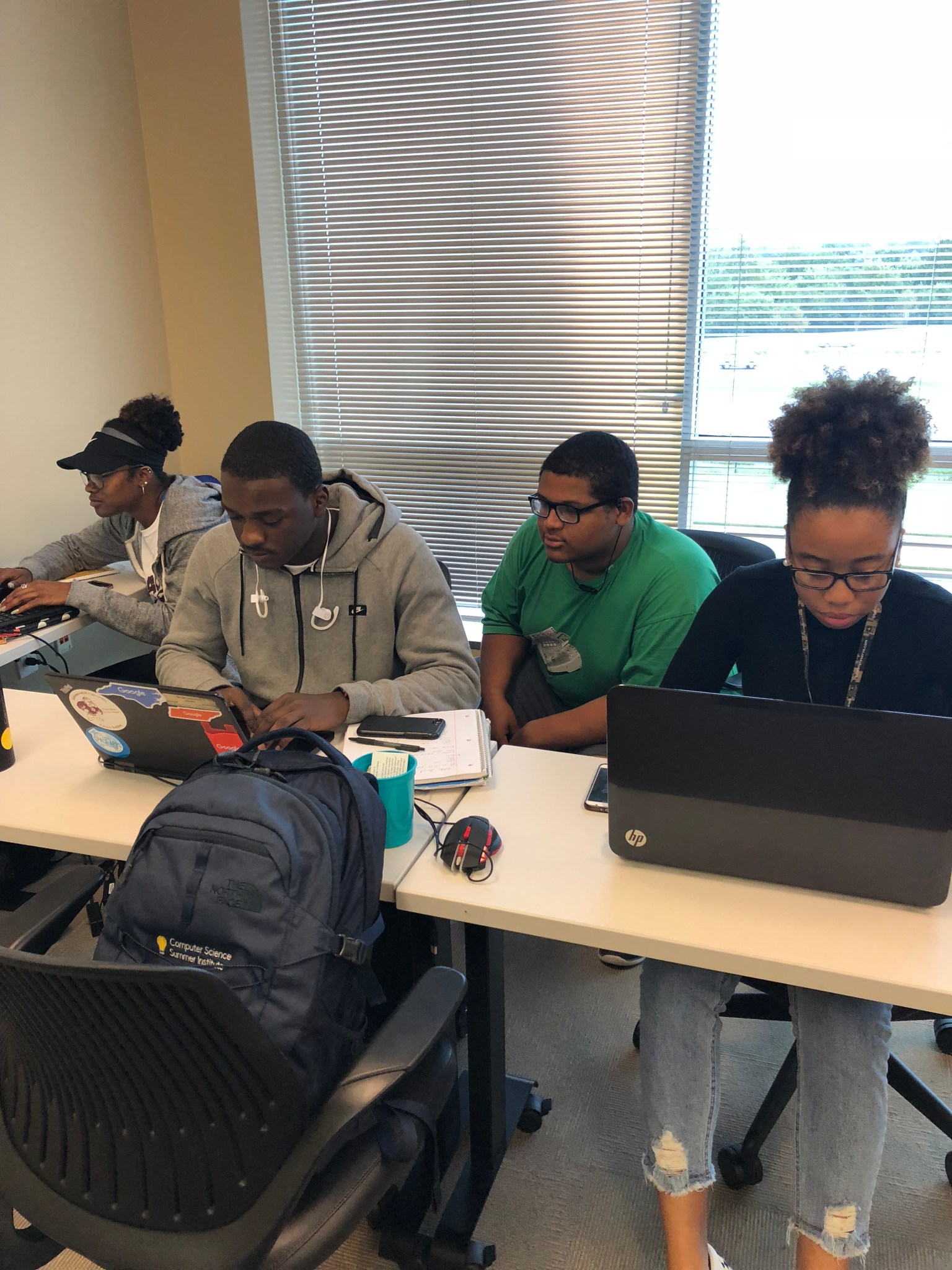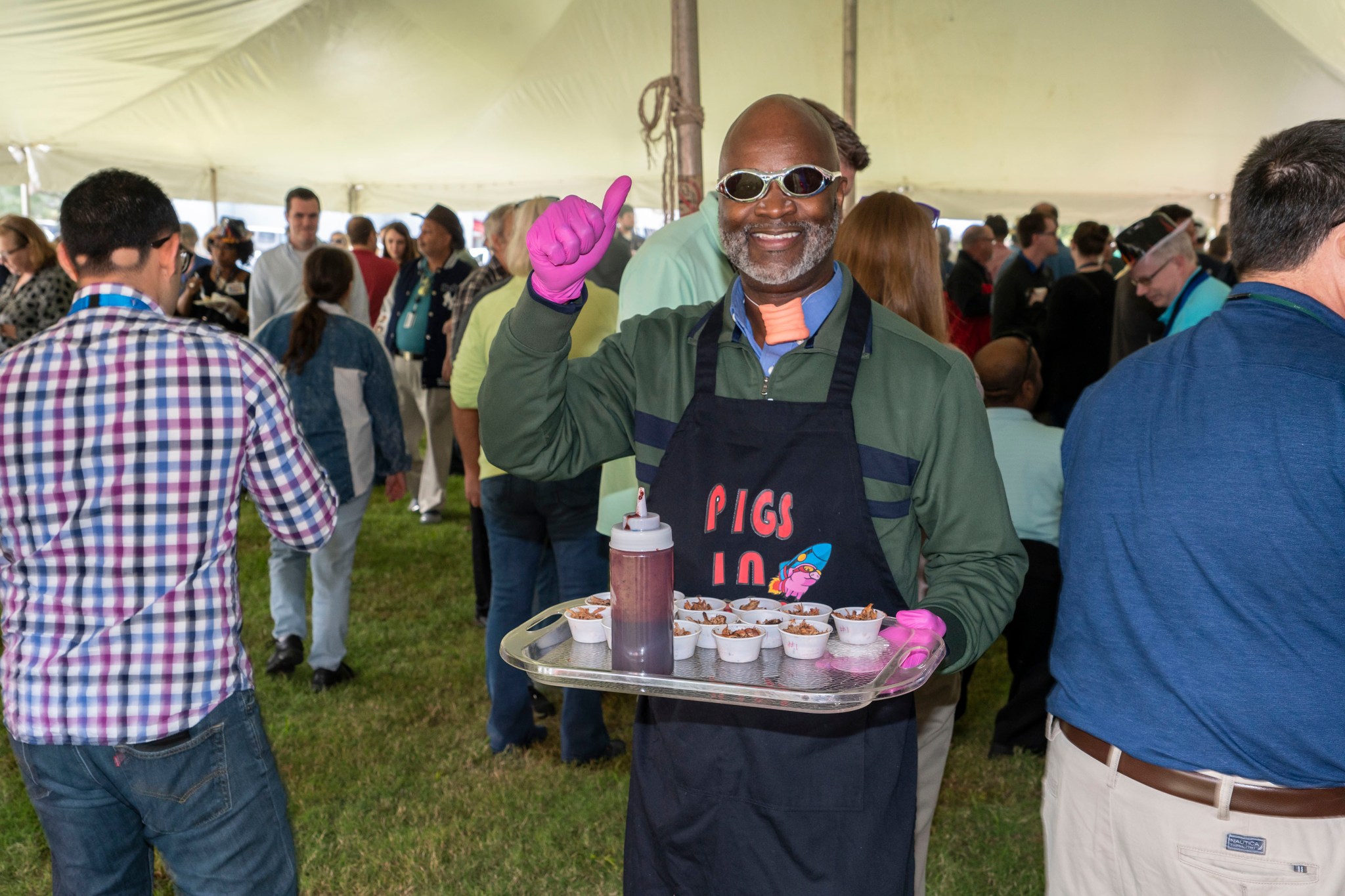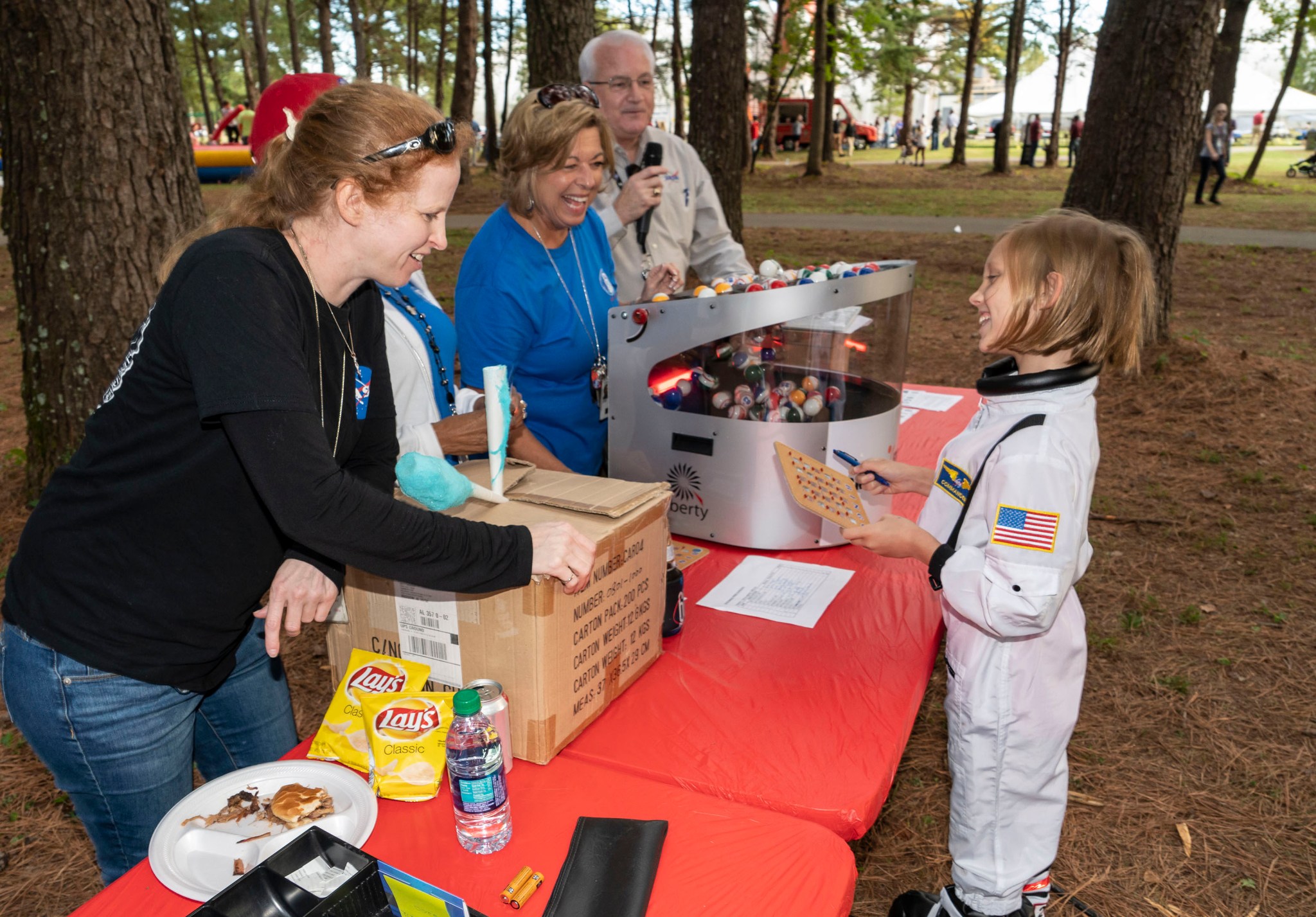In This Week’s Star
- Marshall Advances Carbon Dioxide Filtration for Deep Space Exploration
- Kes 75: Milky Way’s Youngest Pulsar Exposes Secrets of Star’s Demise
- Marshall Team Members Invited to Take Part in Safety Day Oct. 31
- Rocket Science in 60 Seconds: Ins and Outs of the SLS Launch Vehicle Stage Adapter
- Payload Operations and Integration Working Group Host Semiannual Event
- U.S. Space & Rocket Center Hosts Space Apps Challenge
- International Observe the Moon Night Draws Astronomers of All Ages
- Marshall Hosts Hispanic Heritage Month Celebration
- Marshall Team Gathers for ‘Fall Festival’ Oct. 18
- This Week in NASA History: Mississippi Test Facility Selected for Saturn Testing – Oct. 25, 1961
- OSIRIS-REx Highlighted on ‘This Week @NASA’
Marshall Advances Carbon Dioxide Filtration for Deep Space Exploration
By Amanda M. Adams
As NASA plans longer duration manned missions to space, maintaining breathable air in an occupied environment is a crucial challenge to human space exploration. Issues with the current systems — found while working on the International Space Station — have shown that a more reliable and robust carbon dioxide scrubbing system is needed to support the lives of the astronauts on these missions.
Currently on the space station, NASA uses an atmospheric revitalization system, called the Carbon Dioxide Removal Assembly, to remove carbon dioxide from the air. The assembly contains beds filled with thousands of tiny beads called adsorbents that act as a filter to remove, or scrub, carbon dioxide from the air, providing breathable air for astronauts.
“The challenge with the current system is that the absorbents create a large amount of dust which causes issues for the system components, specifically causing the system’s valve motor to stall,” said Jim Richard, the assistant branch chief for the Valves, Lines and Actuator Branch in the Liquid Propulsion Systems Office at NASA’s Marshall Space Flight Center. Currently, if there is a valve system failure on the space station, it is resolved by having spare valves on hand or available on the next resupply mission. In a worst-case scenario, astronauts can return to Earth. With long-term space exploration, the options to resupply or return to Earth will no longer exist, therefore the valve must be reliable and maintainable on-orbit.
To help solve this problem, Richard and his team developed a new air selector valve that tolerates dust better than the current system by rotating 360 degrees and pushing the dust out.
The new design is not only more reliable, increasing the valve’s lifespan from about nine months to about three years, but it can be serviced in orbit. Whenever the current valve fails, an entirely new valve has to be flown to the space station and installed, taking the crew a day’s time to repair. The new air selector valve is serviceable on orbit using a small package of O-rings – doughnut shaped seals used to prevent the passing of air – that can be stowed as a repair kit if needed. The service time will only take about 30 minutes to complete.
“We’ve nicknamed our valve “pigpen” because it loves the dust,” said Richard. “Not only is the valve more capable of handling dust, but the valve itself works so well in the dust that it actually uses it to keep the O-rings from sticking to the drum.”
“We have seen this project go from conception to finished hardware in a little over two years,” said Todd Griffith, the project’s lead engineer. Griffith and Charles Bogle, a senior mechanical engineering intern from Drexel University in Philadelphia, Pennsylvania, worked together on the detailed design of the valve.
The team has completed testing the valve to the required 20,000 cycles and is now testing it to failure. Fabrication of the new valve is underway and six will be sent to the space station for testing on-orbit as part of demonstration hardware and six will remain at Marshall to be retrofit into a testbed on-site.
Adams, an ASRC Federal/Analytical Services employee, supports Marshall’s Office of Strategic Analysis & Communications.
Kes 75: Milky Way’s Youngest Pulsar Exposes Secrets of Star’s Demise
Scientists have confirmed the identity of the youngest known pulsar in the Milky Way galaxy using data from NASA’s Chandra X-ray Observatory. This result could provide astronomers new information about how some stars end their lives.
After some massive stars run out of nuclear fuel, then collapse and explode as supernovas, they leave behind dense stellar nuggets called “neutron stars.” Rapidly rotating and highly magnetized neutron stars produce a lighthouse-like beam of radiation that astronomers detect as pulses as the pulsar’s rotation sweeps the beam across the sky.
Since Jocelyn Bell Burnell, Anthony Hewish and their colleagues first discovered pulsars through their radio emission in the 1960s, over 2,000 of these exotic objects have been identified. However, many mysteries about pulsars remain, including their diverse range of behaviors and the nature of stars that form them.
New data from Chandra are helping address some of those questions. A team of astronomers has confirmed that the supernova remnant Kes 75, located about 19,000 light years from Earth, contains the youngest known pulsar in the Milky Way galaxy.
The rapid rotation and strong magnetic field of the pulsar have generated a wind of energetic matter and antimatter particles that flow away from the pulsar at near the speed of light. This pulsar wind has created a large, magnetized bubble of high-energy particles called a pulsar wind nebula, seen as the blue region surrounding the pulsar.
The Chandra data taken in 2000, 2006, 2009 and 2016 show changes in the pulsar wind nebula with time. Between 2000 and 2016, the Chandra observations reveal that the outer edge of the pulsar wind nebula is expanding at a remarkable 1 million meters per second, or over 2 million miles per hour.
This high speed may be due to the pulsar wind nebula expanding into a relatively low-density environment. Specifically, astronomers suggest it is expanding into a gaseous bubble blown by radioactive nickel formed in the explosion and ejected as the star exploded. This nickel also powered the supernova light, as it decayed into diffuse iron gas that filled the bubble. If so, this gives astronomers insight into the very heart of the exploding star and the elements it created.
The expansion rate also tells astronomers that Kes 75 exploded about five centuries ago as seen from Earth. The object is some 19,000 light years away, but astronomers refer to when its light would have arrived at Earth. Unlike other supernova remnants from this era such as Tycho and Kepler, there is no known evidence from historical records that the explosion that created Kes 75 was observed.
Why wasn’t Kes 75 seen from Earth? The Chandra observations, along with previous ones from other telescopes, indicate that the interstellar dust and gas that fill our galaxy are very dense in the direction of the doomed star. This would have rendered it too dim to be seen from Earth several centuries ago.
The brightness of the pulsar wind nebula has decreased by 10 percent from 2000 to 2016, mainly concentrated in the northern area, with a 30 percent decrease in a bright knot. The rapid changes observed in the Kes 75 pulsar wind nebula, as well as its unusual structure, point to the need for more sophisticated models of the evolution of pulsar wind nebulas.
A paper describing these results appeared in The Astrophysical Journal and is available online. The authors, Stephen Reynolds, Kazimierz Borokowski and Peter Gwynne, are from North Carolina State University in Raleigh. NASA’s Marshall Space Flight Center manages the Chandra program for NASA’s Science Mission Directorate in Washington. The Smithsonian Astrophysical Observatory in Cambridge, Massachusetts, controls Chandra’s science and flight operations.
Marshall Team Members Invited to Take Part in Safety Day Oct. 31
By Jonathan Deal
NASA Marshall Space Flight Center team members are invited to participate in the 2018 Safety Day Oct. 31. With the theme “No One Gets Hurt – Work, Home, Space and Beyond,” Safety Day will feature activities and classes focusing on safety across the center from 9 a.m. to 3 p.m.
The event will kick off at 9 a.m. with an address from former NASA astronaut Bill McArthur in Morris Auditorium. A question-and-answer panel discussion will immediately follow McArthur’s keynote speech. Panelists include McArthur; Roy Malone, director of the Office of Center Operations; Rick Burt, director of Safety & Mission Assurance; Terry Sterry, manager of Marshall’s Employee Assistance Program; and Diana Simpson, coordinator of Marshall’s Workplace Violence Prevention Program. The kickoff event and panel discussion will be broadcast live on Desktop TV and at the following locations at Marshall:
- 4203, Room 1201 and 2002
- 4220, Room 1103
- 4487, Room A218
- 4610, Room 2060
- 4666, Room 3052
- 4708, Room 1243
McArthur, director of Safety and Mission Assurance at NASA’s Johnson Space Center before his retirement in July 2017, will also hold an autograph session at noon in Activities Building 4316.
Beginning at 11:30 a.m. in the Activities Building, Marshall will hold a celebration for achieving one year with no lost time or days away due to injury or illness.
“We’ve gone more than 450 days without an injury or illness at Marshall, which is a huge accomplishment for a center this large and for the kind of work that we do,” said Brandi Thomas, Marshall’s Safety Day event lead. “That is a record for Marshall to go that long without injury or illness. It’s a testament to the strong safety culture at the center.”
Other activities and classes include an update on NASA’s Space Launch System concentrating on flight safety, “Home Fire Prevention” presented by the Bastion Technologies fire prevention team and various physical fitness classes offered at the Marshall Wellness Center throughout the day.
For more information, including class descriptions, schedule of events, list of vendors and activity registration, visit the Safety Day 2018 ExplorNet page.
Deal, an ASRC Federal/Analytical Services employee and Marshall Star Editor, supports Marshall’s Office of Strategic Analysis & Communications.
Rocket Science in 60 Seconds: Ins and Outs of the SLS Launch Vehicle Stage Adapter
Rocket Science in 60 Seconds gives you an inside look at work being done at NASA to explore deep space. In this episode, Jennifer Takeshita shows you the ins and outs of the launch vehicle stage adapter for NASA’s Space Launch System rocket. Step inside NASA’s Marshall Space Flight Center and learn about flight hardware in under a minute. For more information about SLS, visit https://www.nasa.gov/exploration/systems/sls/index.html. (NASA)
Payload Operations and Integration Working Group Host Semiannual Event
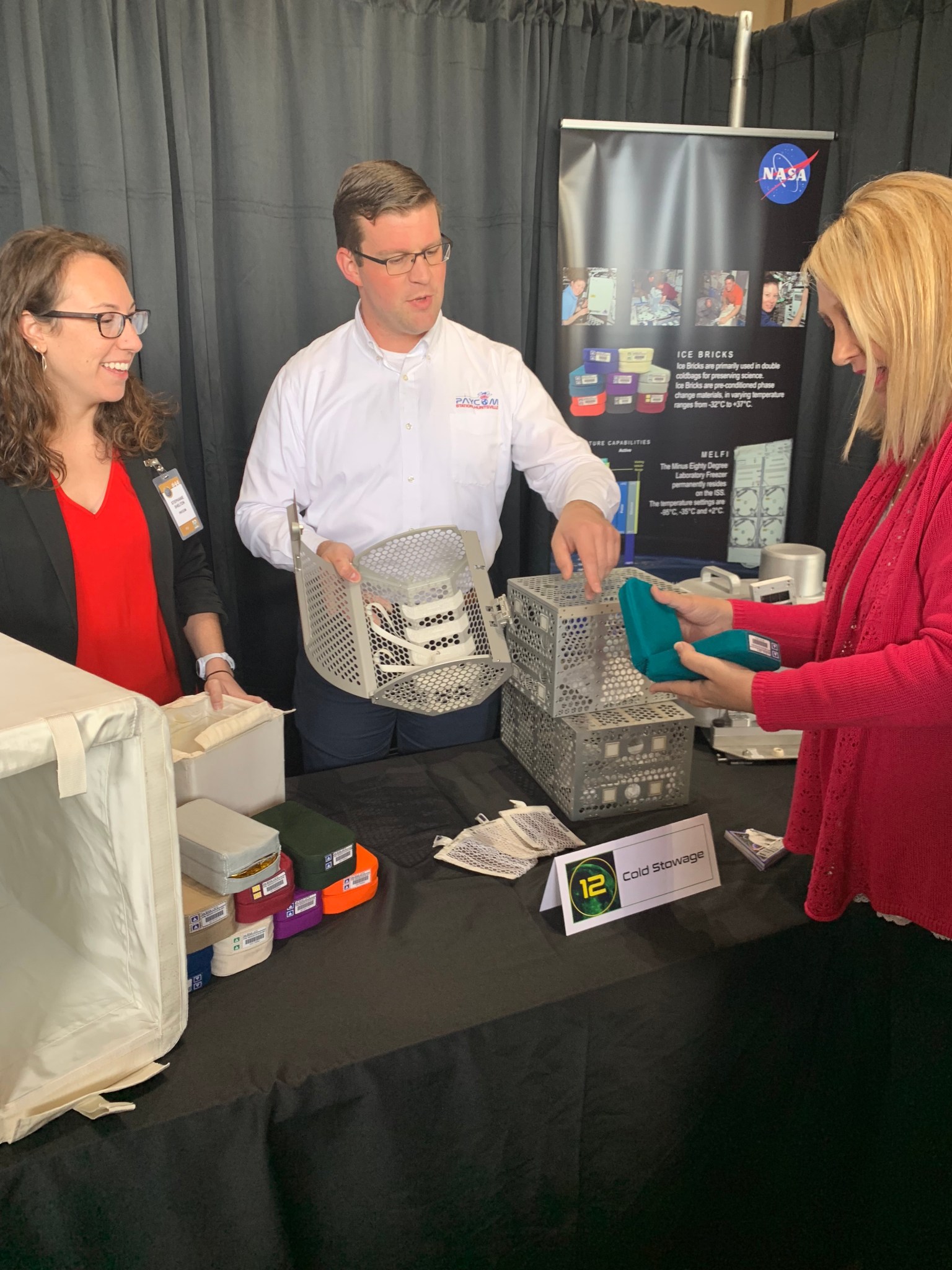
This week, NASA Marshall Space Flight Center team members were invited to attend the semiannual Payload Operations and Integration Working Group meeting Oct. 23-25 at the Huntsville Botanical Garden. Payload developers and Payload Operations Integration Center personnel gather to improve coordination and information flow with Marshall’s customers. The information trade fair allows attendees to hear more about International Space Station payload science projects. One of the many projects featured includes Cold Stowage, technology that provides controlled environments to meet temperature requirements during ascent, on-orbit operations and return. The Payload Operations Integration Center at Marshall serves as “science central” for the space station, working 24/7, 365 days a year in support of the orbiting laboratory’s scientific experiments. For more information, visit Marshall’s POIC page. (NASA/Morgan MacMillan)
U.S. Space & Rocket Center Hosts Space Apps Challenge
NASA’s 2018 International Space Apps Challenge returned to Huntsville for a second year Oct. 19-21. The global hackathon was held at the U.S. Space & Rocket Center’s Education Training Facility and was facilitated by Urban Engine of Huntsville. The event brought together people of all ages and backgrounds to solve real-world problems with collaborative, original solutions during a 48-hour period. The teams worked with NASA’s open source data and products to design innovative solutions to scientific challenges faced on Earth and in space. A total of 131 students formed 33 teams in the competition, with eight high school, 13 college and 12 professional teams participating.
International Observe the Moon Night Draws Astronomers of All Ages
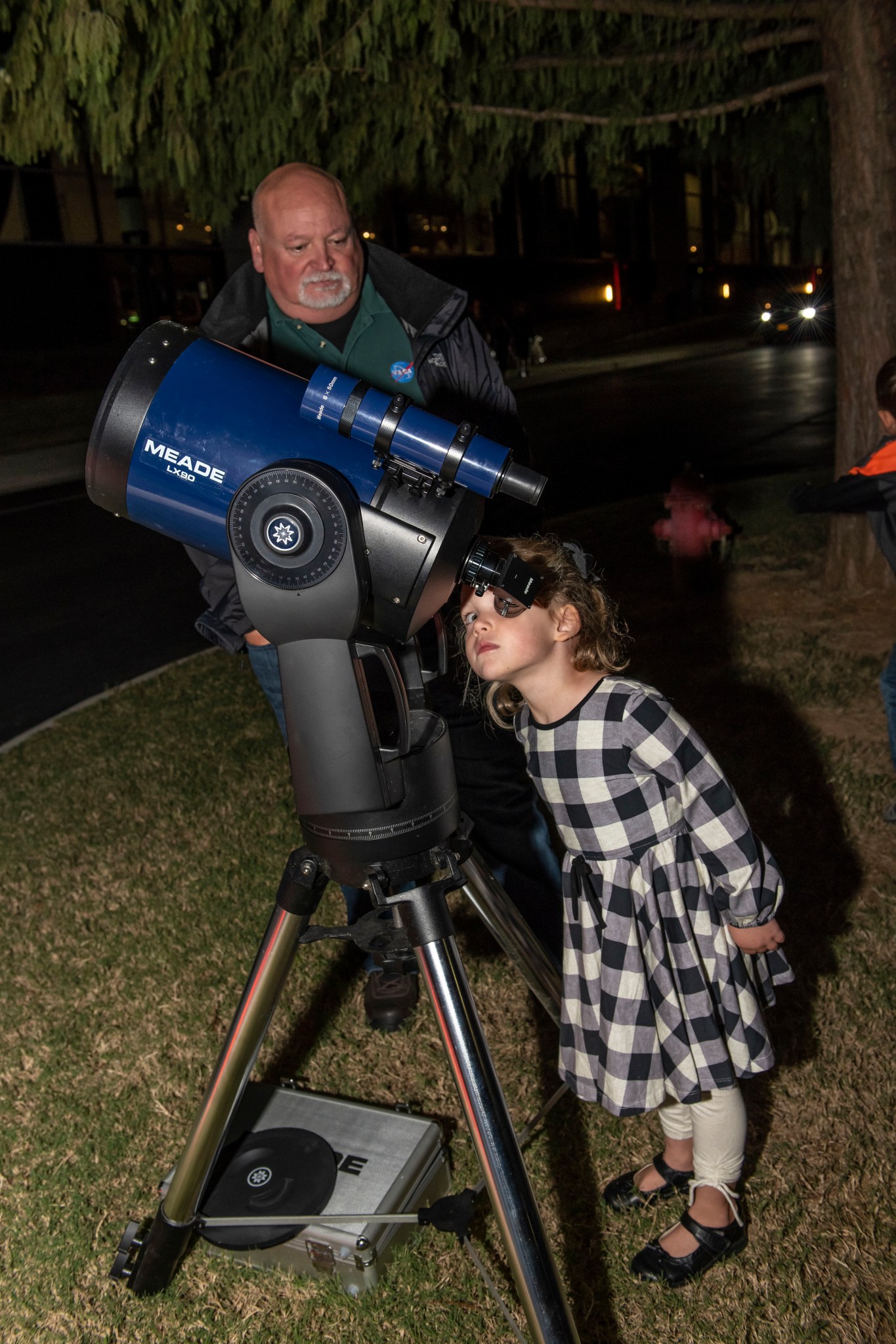
Brian Mitchell, left, manager of communications and public outreach for NASA’s Planetary Missions Program Office at Marshall Space Flight Center, gives Edie Hardiman an up close look at Earth’s nearest neighbor from one of the many telescopes on hand Oct. 20 at Marshall’s International Observe the Moon Night event at the U.S. Space & Rocket Center. (NASA/Fred Deaton)
Marshall Hosts Hispanic Heritage Month Celebration
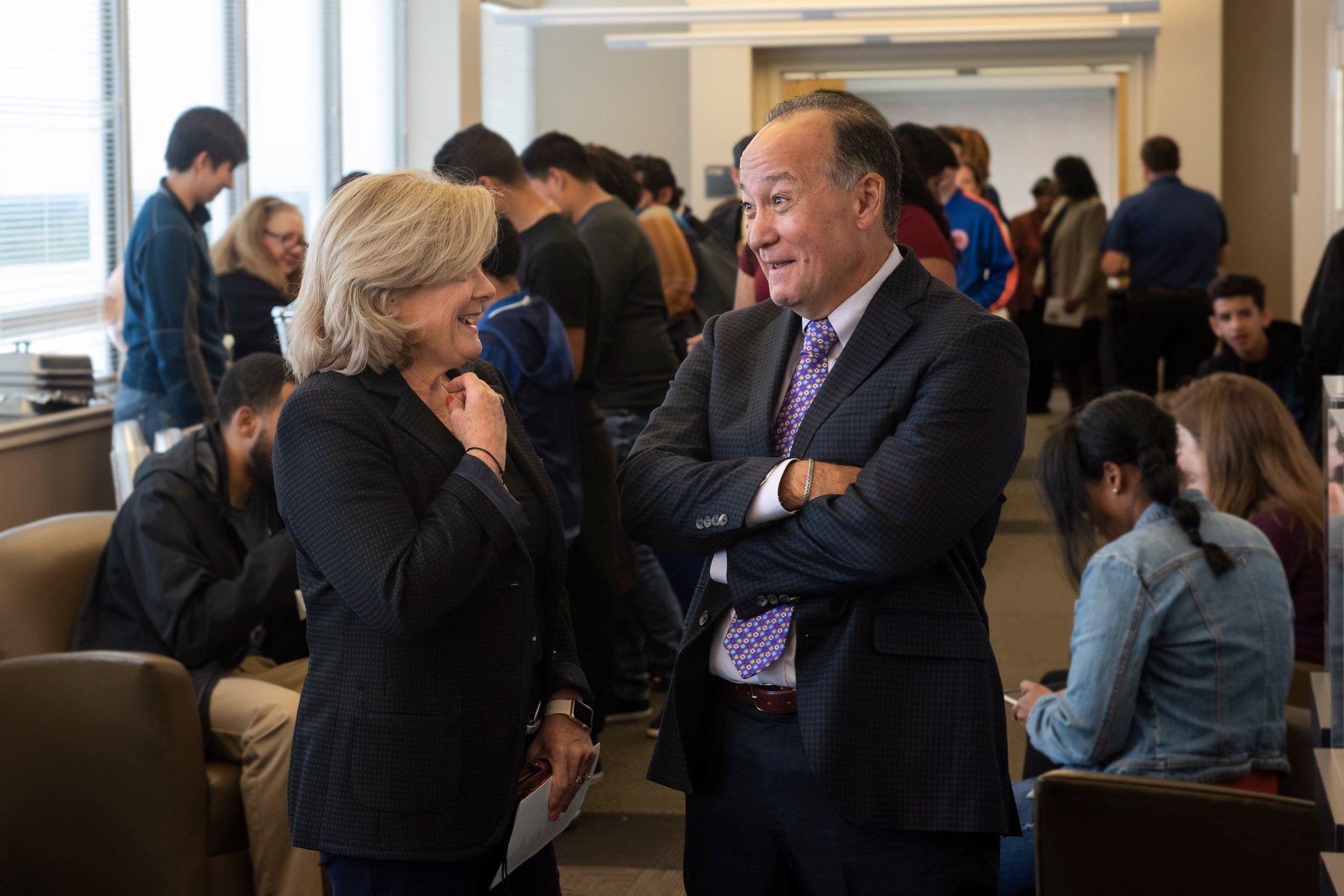
Ray Lugo, director of the Florida Space Institute in Orlando and former director of NASA’s Glenn Research Center, talks with Jody Singer, director of NASA’s Marshall Space Flight Center, Oct. 18 following his keynote address at Marshall’s annual Hispanic Heritage Month celebration. The 2018 event was themed “One Endless Voice to Enhance Our Traditions.” Participants sampled Central American and South American cuisine and listened to live music by the local band 4 Amigos. Lugo retired from NASA in 2013. The annual celebration was organized by Marshall’s Office of Diversity and Equal Opportunity. (NASA/MSFC/Charles Beason)
Marshall Team Gathers for ‘Fall Festival’ Oct. 18
Larry Mack, deputy director of the Office of Human Capital at NASA’s Marshall Space Flight Center, hands out barbecue samples during the “2018 Fall Festival” social sponsored by the Marshall Exchange Oct. 18. (NASA/Fred Deaton)
A future astronaut turns in her winning bingo card at Marshall’s 2018 Fall Festival Oct. 18, held along the walking trail behind the Marshall Wellness Center. Marshall team members and their families enjoyed food, music and other fall festivities at the annual event. (NASA/Fred Deaton)
This Week in NASA History: Mississippi Test Facility Selected for Saturn Testing – Oct. 25, 1961
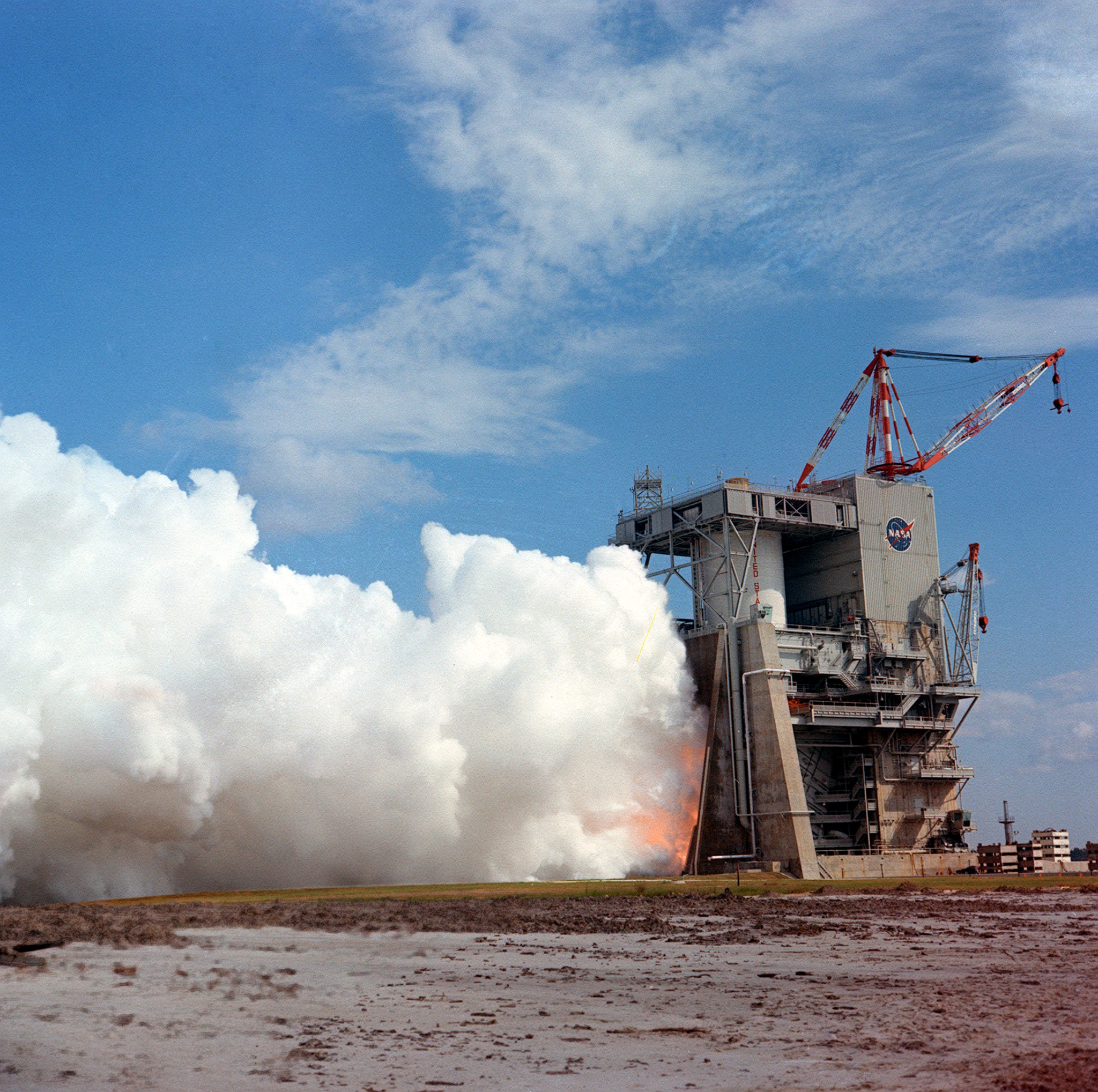
This week in 1961, the federal government announced the selection of Hancock County, Mississippi, to be the site of static testing for the Saturn Program. The site along the Pearl River was originally designated Mississippi Test Operations and was operated by NASA’s Marshall Space Flight Center until it became an independent NASA installation in 1988 and was renamed Stennis Space Center. Here, the Saturn V S-II, or second stage, is test fired in the facility’s S-II test stand. The S-II stage of the Saturn V used five J-2 engines, each producing 200,000 pounds of thrust. Today, Marshall is developing NASA’s Space Launch System, the most powerful rocket ever built, capable of sending astronauts to the Moon, Mars and deeper into space than ever before. The NASA History Program is responsible for generating, disseminating, and preserving NASA’s remarkable history and providing a comprehensive understanding of the institutional, cultural, social, political, economic, technological and scientific aspects of NASA’s activities in aeronautics and space. For more pictures like this one and to connect to NASA’s history, visit the Marshall History Program’s webpage. (NASA)
OSIRIS-REx Highlighted on ‘This Week @NASA’
The second braking maneuver of NASA’s OSIRIS-REx spacecraft is featured in “This Week @NASA,” a weekly video program broadcast nationwide on NASA-TV and posted online.
OSIRIS-REx is in the midst of a six-week series of maneuvers designed to fly the spacecraft through a precise corridor toward asteroid Bennu. On Oct. 15, the spacecraft used its main engine thrusters to perform the second braking maneuver designed to slow the spacecraft’s speed relative to Bennu. The spacecraft is scheduled to arrive at the asteroid in early December to perform a series of flybys over Bennu’s poles and equator.
OSIRIS-REx is the third mission in NASA’s New Frontiers Program Marshall Space Flight Center manages New Frontiers for the agency’s Science Mission Directorate in Washington.
View this and previous episodes at “This Week @NASA” on NASA’s YouTube page.






























